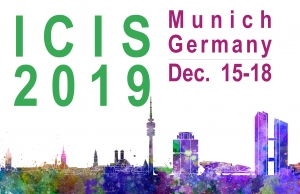Paper ID
2609
Paper Type
short
Description
The investigation of user behavior in IS contexts is often conducted by utilizing self-report measurements. To complement these measurements, neuroscientific methods have indicated their potential for IS research. Most pioneering research work utilized fMRI as neuroimaging method, which is associated with a decreased ecological validity. To investigate whether mobile fNIRS – an innovative, portable and lightweight neuroimaging method – can overcome the limited ecological validity of fMRI, reproducing existing neuroscientific research results, this study aims to explore whether mobile fNIRS could be used as a valid neuroimaging method for IS research, or more precisely for ecommerce research. Preliminary research findings revealed that fNIRS is capable of partly reproducing pioneering research results. Consequently, fNIRS is found to be a reliable and valid neuroimaging method to increase the ecological validity in IS research in certain situations and circumstances, providing a fruitful new avenue to investigate IS research relevant scenarios.
Recommended Citation
Nissen, Anika; Krampe, Caspar; Kenning, Peter; and Schütte, Reinhard, "Utilizing Mobile fNIRS to Investigate Neural Correlates of the TAM in eCommerce" (2019). ICIS 2019 Proceedings. 24.
https://aisel.aisnet.org/icis2019/behavior_is/behavior_is/24
Utilizing Mobile fNIRS to Investigate Neural Correlates of the TAM in eCommerce
The investigation of user behavior in IS contexts is often conducted by utilizing self-report measurements. To complement these measurements, neuroscientific methods have indicated their potential for IS research. Most pioneering research work utilized fMRI as neuroimaging method, which is associated with a decreased ecological validity. To investigate whether mobile fNIRS – an innovative, portable and lightweight neuroimaging method – can overcome the limited ecological validity of fMRI, reproducing existing neuroscientific research results, this study aims to explore whether mobile fNIRS could be used as a valid neuroimaging method for IS research, or more precisely for ecommerce research. Preliminary research findings revealed that fNIRS is capable of partly reproducing pioneering research results. Consequently, fNIRS is found to be a reliable and valid neuroimaging method to increase the ecological validity in IS research in certain situations and circumstances, providing a fruitful new avenue to investigate IS research relevant scenarios.


